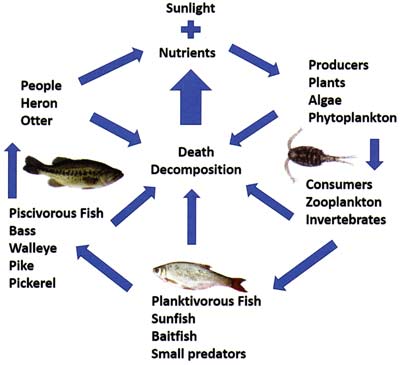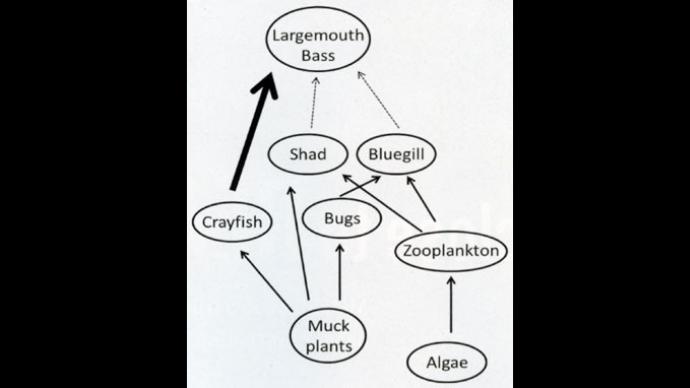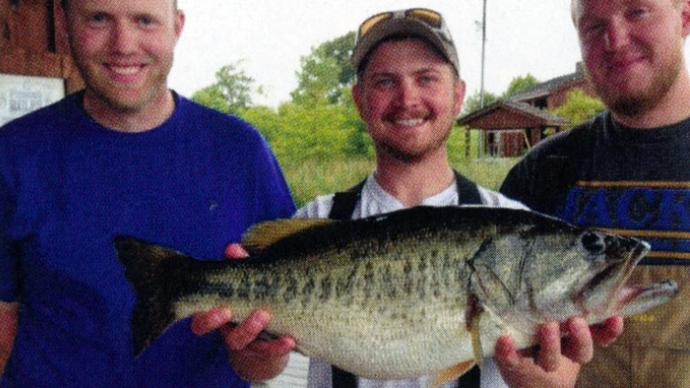
Summer ponds are a busy place. Waterfowl come and go, or come, have a clutch of babies, and hang around a lot. Humans stop by to fish, swim, or sit and enjoy the scenery. Amphibians, such as frogs and salamanders, eat insects in the shallow weedy parts of the pond (littoral zone). Fish move all around the ponds.
Many fish species lay their eggs in shallow water but may need to live in deeper water sections when it gets warm. Every species of fish must find their preferred source of food regularly when it's warm out, so they are all on the hunt for food.
Large mammals stop by for a drink or even a snack.
The pond is just as busy under the surface, in the water column, and in the mud at the bottom of the pond (benthos). All sorts of insects live in the pond bottom, and phytoplankton and zooplankton move up, down, and all around in the water column, even though we can't see them. Other insects float around at or near the pond surface, usually both hunting for food and being hunted as food.
Watching the many living things going about their busy lives at a pond is exciting and interesting, but it can be challenging to keep track of. One way to organize the eating and the being eaten in a pond is by drawing a food web. Food webs are pictures that show the many plants and animals that can be identified in a pond and how they relate to each other. Different ponds may have slightly or even significantly different webs. Mesotrophic or middle-aged ponds tend to have more complex food webs than eutrophic (old) and oligotrophic (young) ponds. The food web on this page shows our pond and the main groups of organisms that inhabit it, with some individuals from each group.
Some commonly used descriptions of groups of organisms are:
- Primary producer - plants, algae, phytoplankton - can create their own energy using (most commonly) the sun.
- Herbivores - most zooplankton - eat plants, including phytoplankton.
- Omnivore - golden shiner, fathead minnow - eat whatever is available.
- Detritivores - amphipods, fathead minnows, bacteria - eat dead and decaying things.
- Carnivore/ Piscivore - smallmouth and Largemouth bass, trout - carnivores eat meat, and piscivores eat just fish meat.
- Zooplankton - daphnia, copepods - eat phytoplankton.
- Phytoplankton - little tiny diatoms and algae - tiny primary producers in the water column.
Every organism in a pond (and everywhere else) must find a way to get food. Even primary producers (plants and algae) get food by making it themselves. Drawing a food web of a pond shows how all of the plants and animals depend on each other. Food webs show how changing even one organism will have a ripple effect on the whole pond. Webs also show why a diverse pond is a healthy pond. The more interconnected, messy, and complicated a food web is, the more likely the pond and its inhabitants can make it through a disaster like drought, heat wave, an introduced species, or a sickness that kills one or two species.
Reprinted with permission from Pond Boss Magazine



